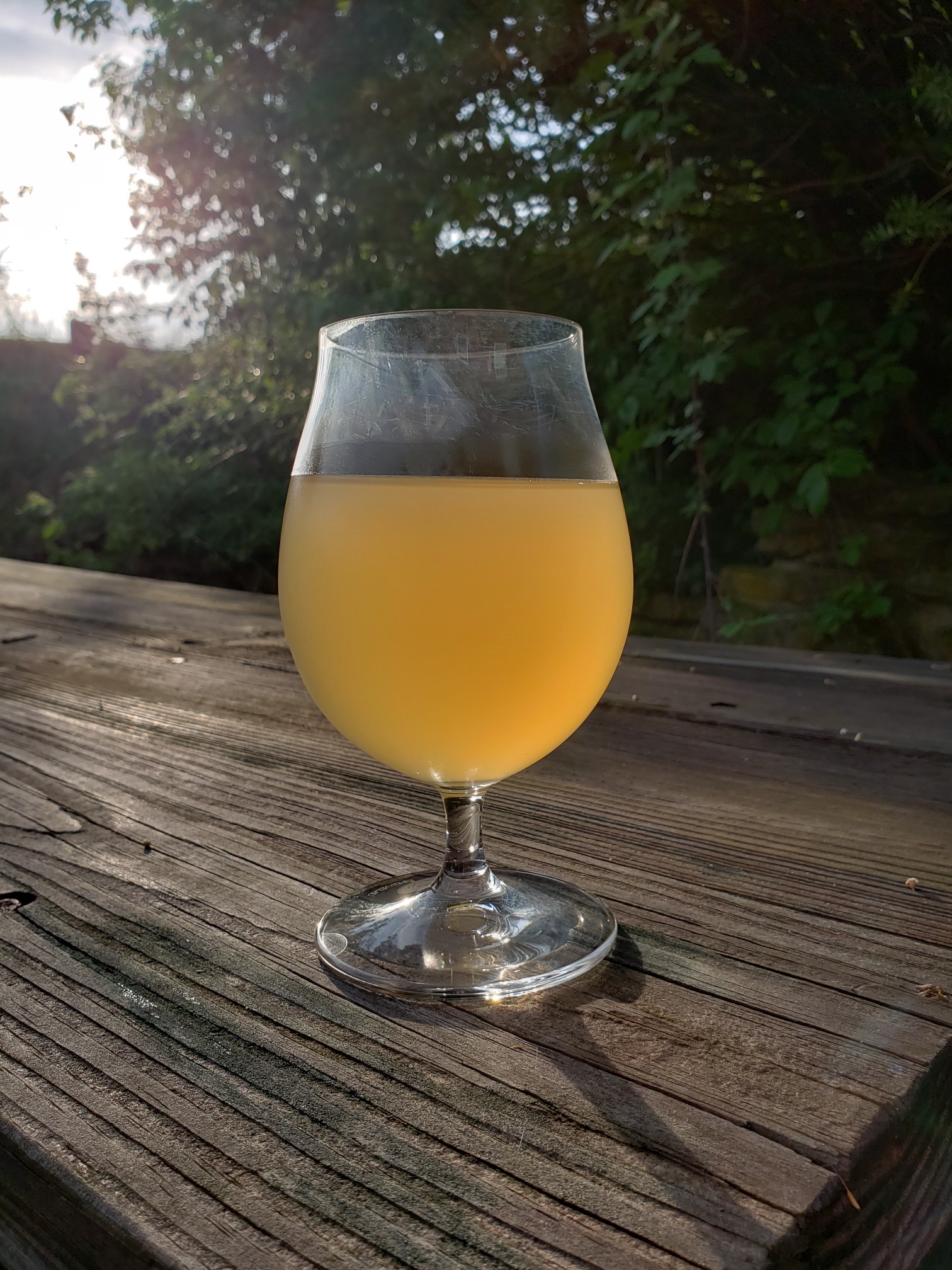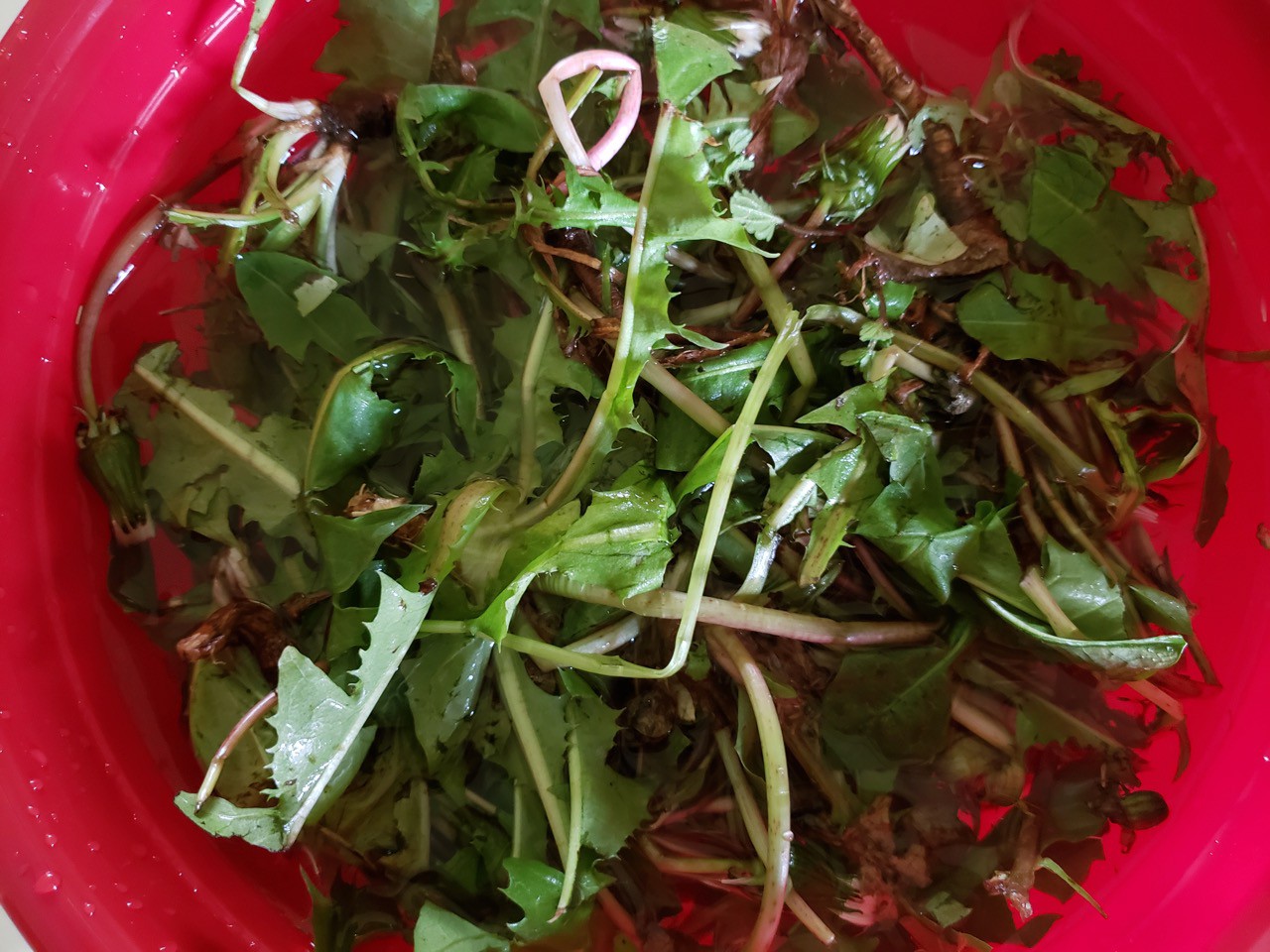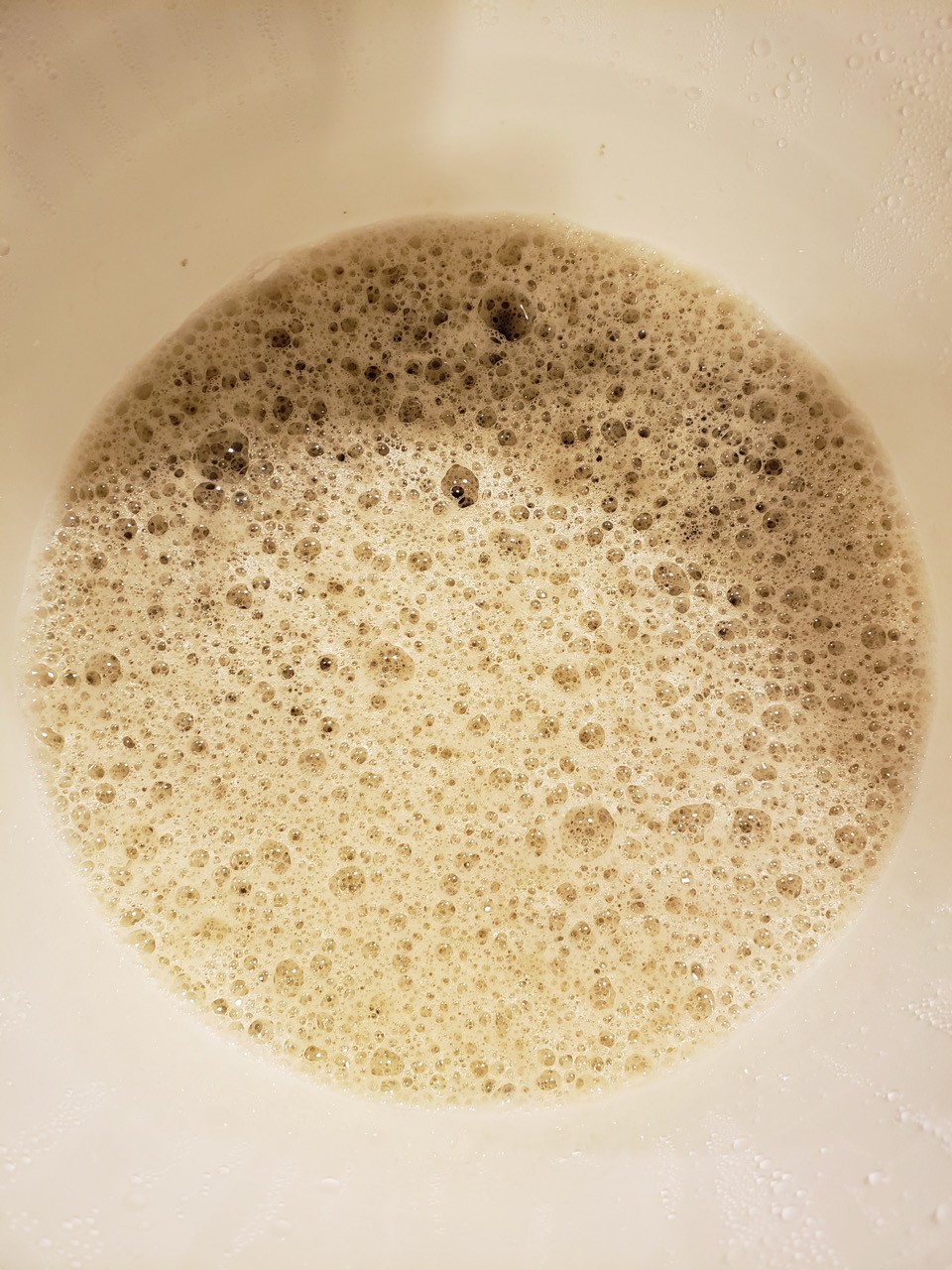
The bumper crop of dandelions on the farm has inspired me to look for new ways to use these delicious and nutritious gems. My most recent find was a recipe from Mother Earth News (by Roger Phillips, April 2015) for dandelion beer. In his article, the author provides some interesting history behind the drink: it was apparently a very popular brew among iron foundry and pottery workers in England. No tiny paper umbrella with this one!
This herbal beer doesn’t require any grain or hops, is very easy to make, and is ready to drink in less than two weeks. Find the recipe here: Homemade Dandelion Beer.
The recipe requires a quart of young dandelions with intact taproots. I started digging up dandelions with my hand weeder, only to have several roots break off because the clay soil was so hard and dry. Recommendation: dig up the dandelions after a rain or early in the morning when the ground is still moist and tease those roots out of the ground gently. After a bit of effort (and some cursing), I managed to procure a quart’s worth, with some intact roots.

After washing the dandelion plants well, with special focus on the very dirty roots, I put them into a stockpot, along with chopped ginger, lemon rind, and a gallon of water. This boiled for 10 minutes, then the solids were strained out. I then poured the liquid over the sugar and cream of tartar in the fermenting bucket, stirring to ensure the sugar was dissolved. I set the bucket, loosely covered, aside to cool.
When the liquid was tepid, I added yeast and the fresh lemon juice. The recipe called for “brewer’s yeast”, but I substituted half the amount of baking yeast, instead. Before proceeding, I read about the pros and cons of using baking yeast in beer recipes, and understood the risks inherent in using a yeast not specifically intended for beer (like “off” flavors due to wild yeast contaminants, for example) and forged ahead, anyway. Worst case scenario: the beer was so bad it wouldn’t be drinkable. Ok, risk accepted.

The mixture worked its magic – the fermentation was surprisingly active, and the brewing beer smelled great. An early sample revealed it to be very tasty. After 5 days had elapsed, I strained the beer into screw-top bottles and put them in the refrigerator to chill.
Final verdict: seriously tasty! It’s reminiscent of beer in that it’s carbonated, but the similarity pretty much ends there. It’s light and refreshing without the malt or hops flavors typical of grain-based beers, with complex herbal notes – like a suggestion of the dandelion’s golden blooms. Would I make this dandelion beer again? Definitely…though next time, I’ll try using wine yeast; in a pinch, though, bread yeast still creates a lovely finished product.

Comments are closed.